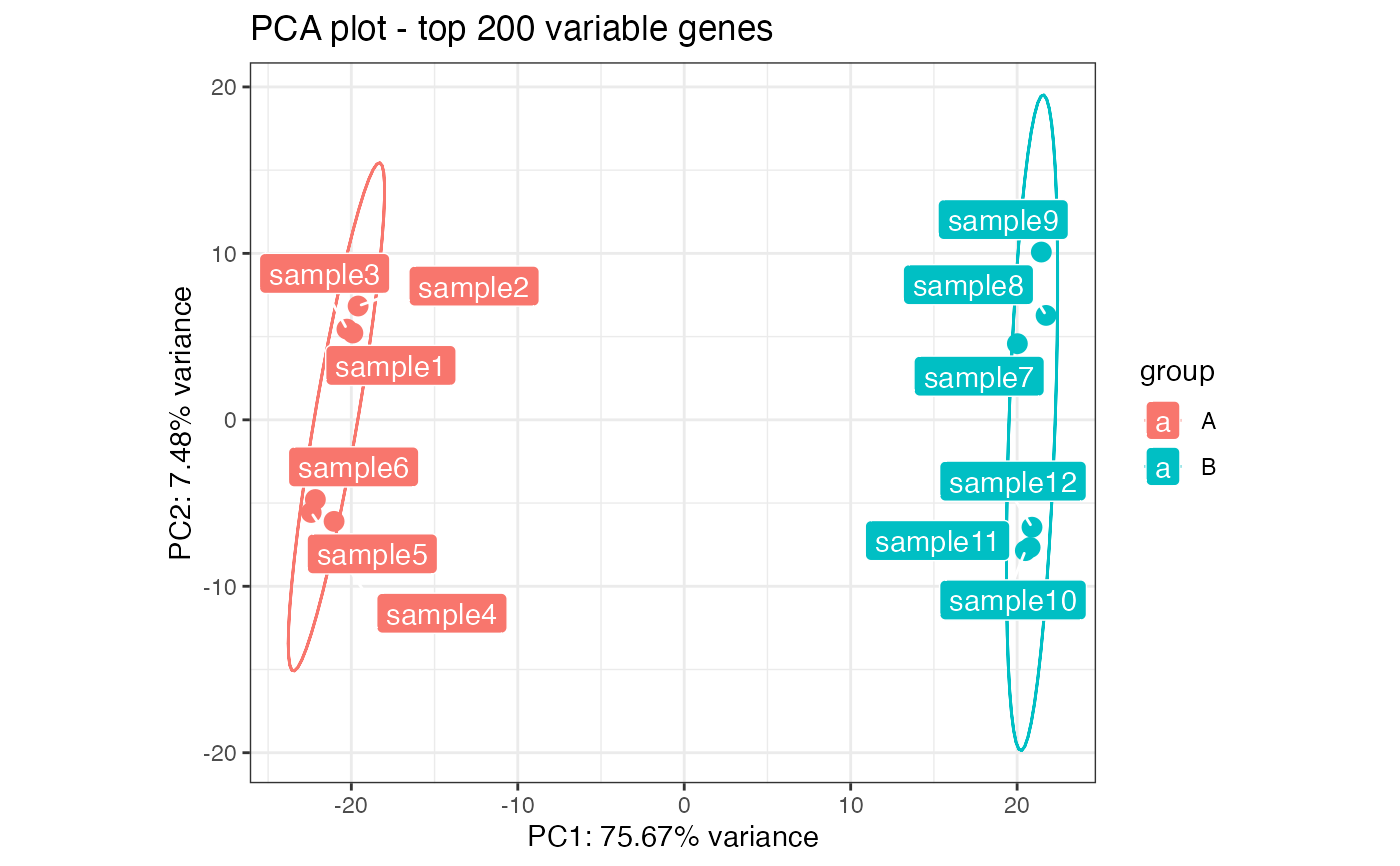Plots the results of PCA on a 2-dimensional space
pcaplot(
x,
intgroup = NULL,
ntop = 500,
returnData = FALSE,
title = NULL,
pcX = 1,
pcY = 2,
text_labels = TRUE,
point_size = 3,
ellipse = TRUE,
ellipse.prob = 0.95
)Arguments
- x
A
DESeq2::DESeqTransform()object, with data inassay(x), produced for example by eitherDESeq2::rlog()orDESeq2::varianceStabilizingTransformation()/DESeq2::vst()- intgroup
Interesting groups: a character vector of names in
colData(x)to use for grouping. Defaults to NULL, which would then select the first column of thecolDataslot- ntop
Number of top genes to use for principal components, selected by highest row variance
- returnData
logical, if TRUE returns a data.frame for further use, containing the selected principal components and intgroup covariates for custom plotting
- title
The plot title
- pcX
The principal component to display on the x axis
- pcY
The principal component to display on the y axis
- text_labels
Logical, whether to display the labels with the sample identifiers
- point_size
Integer, the size of the points for the samples
- ellipse
Logical, whether to display the confidence ellipse for the selected groups
- ellipse.prob
Numeric, a value in the interval [0;1)
Value
An object created by ggplot, which can be assigned and further customized.
Examples
dds <- makeExampleDESeqDataSet_multifac(betaSD_condition = 3, betaSD_tissue = 1)
rlt <- DESeq2::rlogTransformation(dds)
pcaplot(rlt, ntop = 200)
#> Defaulting to 'condition' as the `intgroup` parameter...
